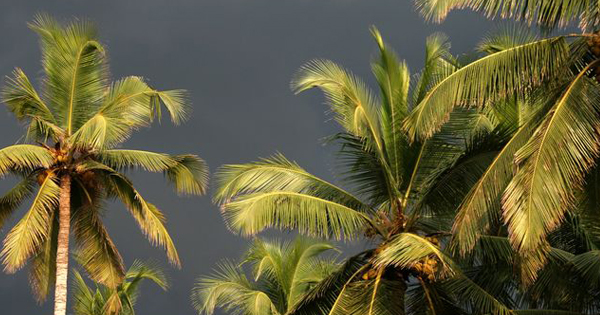
The Atlantic hurricane season is underway, and it’s important for all of us to get to know the key tropical weather terms that may be used by meteorologists over the next few months.
DID YOU KNOW: Understanding tropical terminology can help you stay informed and prepared for whatever nature may send our way this hurricane season?
From tropical disturbances to hurricanes, it’s important to familiarize yourself with the common terms used to describe areas of tropical weather. Officials may use these terms if they need to issue important weather alerts.
TEST YOUR KNOWLEDGE: Here is a breakdown of the most common terminology and their definitions. By getting to know these terms, you can make informed decisions about the preparations you may need to take.
- Tropical Disturbance: A weather system that originates in the tropics or subtropics, characterized by disorganized showers and thunderstorms that last for at least 24 hours.
- Tropical Wave: The most common type of tropical disturbance. It is an elongated area of relatively low pressure that moves east to west across the tropics.
- Invest: An area of disturbed weather monitored by the National Hurricane Center for data collection and monitoring.
- Potential Tropical Cyclone: A developing tropical disturbance with a high likelihood of soon becoming a tropical or subtropical cyclone.
- Tropical Cyclone: A non-frontal area of low pressure, originating over tropical or subtropical waters, characterized by a well-defined center of circulation with organized showers and thunderstorms. This includes tropical depressions, tropical storms and hurricanes.
- Tropical Depression: A tropical cyclone with maximum sustained winds of 38 mph or less.
- Tropical Storm: A tropical cyclone with maximum sustained winds of 39 to 73 mph.
- Hurricane: A tropical cyclone producing maximum sustained winds of at least 74 mph. Hurricanes are classified based on their wind speed using the Saffir-Simpson Wind Scale.
BE PREPARED: There are many proactive measures that residents can take to prepare their homes for hurricanes and help reduce the risk of flooding in their communities. These include:
✅ Make sure drainage gates, ditches and swales in your neighborhood are clear of debris.
✅ Trim your trees and remove dead vegetation in your yard. Do not trim trees if a major storm is in the forecast.
✅ Check your community retention pond or lake for obstructed pipes and contact the appropriate authority for removal (could be your HOA, city, county, or local drainage district).
✅ Find out who is responsible for drainage in your community. Visit SFWMD.gov/FloodControl.
✅ Make a personal plan for hurricane preparedness. Learn more at FloridaDisaster.org.
PROTECTING OUR COMMUNITIES: The South Florida Water Management District (SFWMD) continuously monitors weather conditions and forecasts, making necessary operational adjustments in advance of and in response to rainfall.
If a storm approaches the region, SFWMD water managers and field station staff may take a range of steps to ensure the primary system can receive rainwater from local drainage systems. You may see canals or lakes lower than normal before storms as water managers temporarily “draw down” the system to create more room for anticipated storm water.
We encourage you to visit SFWMD.gov/FloodControl to learn more about what to expect in your neighborhood when it rains and the steps you can take to prepare for hurricane season.
